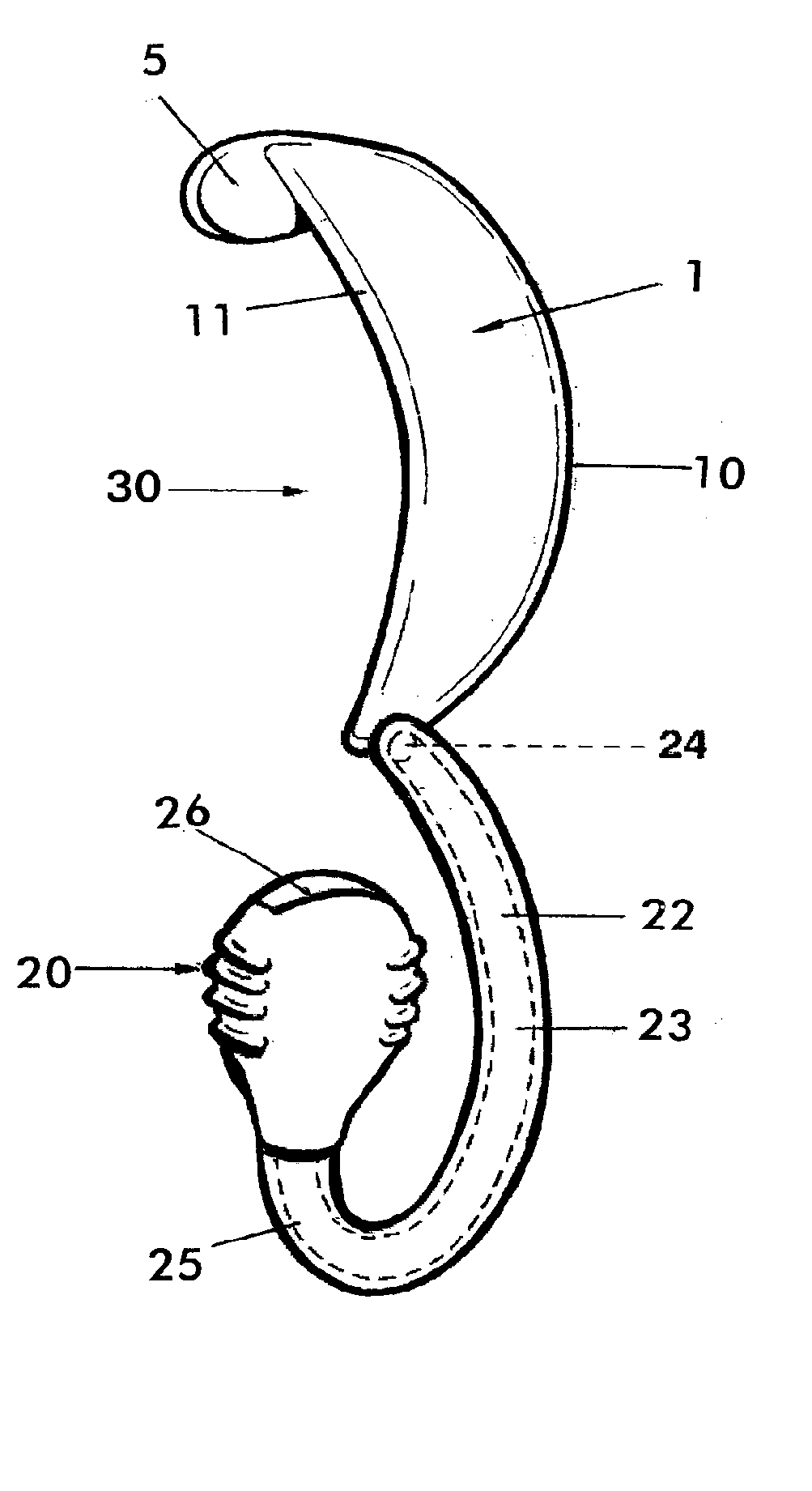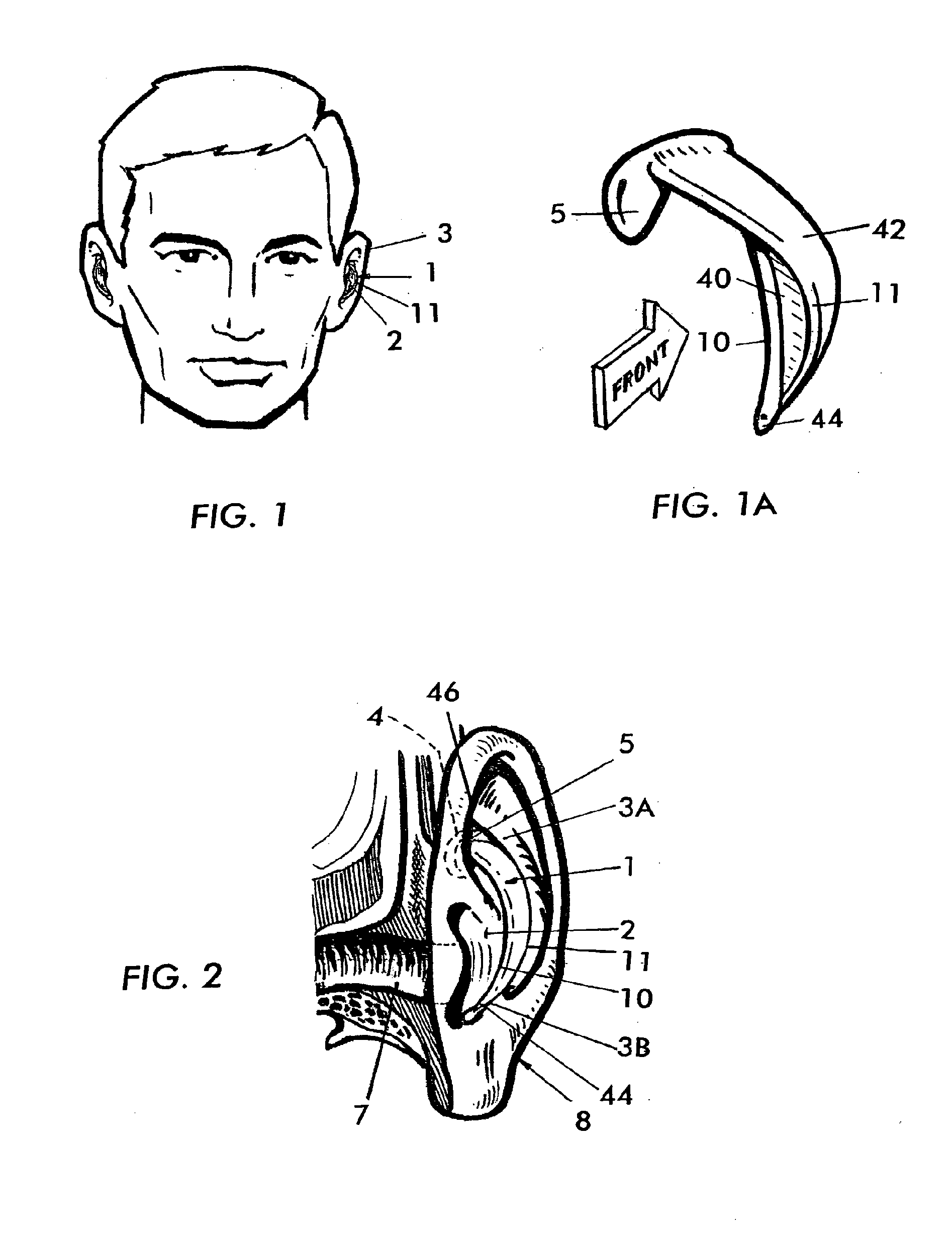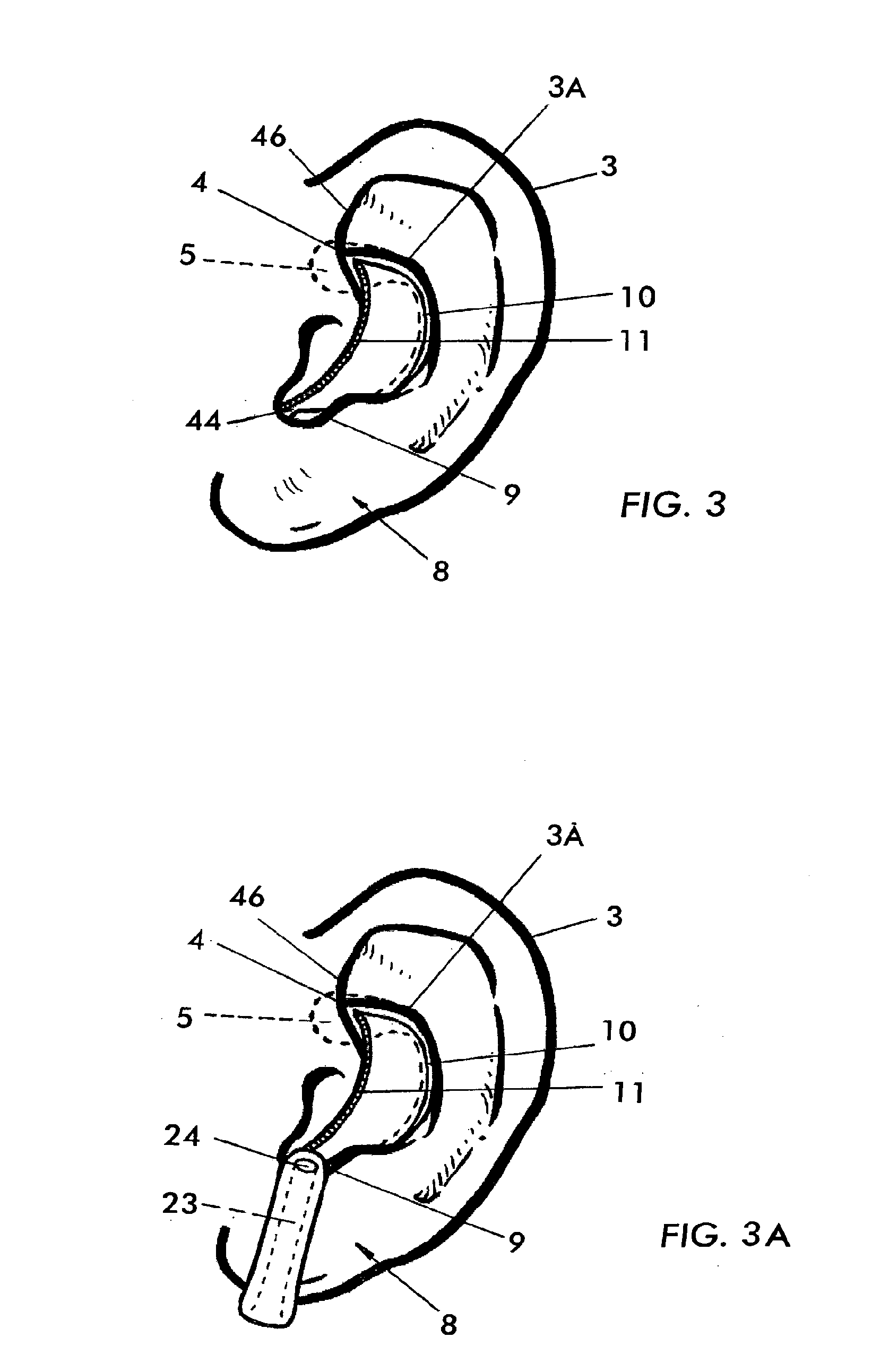External ear insert for hearing comprehension enhancement
a technology of comprehension enhancement and external ear inserts, which is applied in the direction of hearing aid mounting/interconnection, non-occlusive ear tips, instruments, etc., can solve the problems of not providing more normal hearing, interfering with eyeglasses, and substantial or complete amplitude loss, and achieves enhanced ear passage gain
- Summary
- Abstract
- Description
- Claims
- Application Information
AI Technical Summary
Benefits of technology
Problems solved by technology
Method used
Image
Examples
Embodiment Construction
[0030]FIG. 1 shows the front view of a man's face and head. Here, earpieces 1 which comprise the hearing enhancement devices according to the invention are positioned in the external portions of both ears 3. As may best be seen in FIGS. 1A, 2, 3, and 4, earpiece 1 is a scoop-like structure having variable three-dimensional curvature in a horizontal plane typified by line 6-6 in FIG. 4, in a vertical plane typified by line 7-7 in FIG. 4, and in the plane of the drawings. As will be appreciated, the earpiece for the left ear has been illustrated. The right earpiece is the mirror image of the left earpiece.
[0031]Ear pieces 1 are formed of any suitable or desired plastic material, preferably one which can be made transparent (clear or flesh-toned) and flexible to the desired extent, such as silicone rubber or the like.
[0032]Earpiece 1 includes a forwardly facing concave surface 40, and a rearwardly facing convex surface 42, the front edges of which are delimited by forwardly facing edge...
PUM
 Login to View More
Login to View More Abstract
Description
Claims
Application Information
 Login to View More
Login to View More - R&D
- Intellectual Property
- Life Sciences
- Materials
- Tech Scout
- Unparalleled Data Quality
- Higher Quality Content
- 60% Fewer Hallucinations
Browse by: Latest US Patents, China's latest patents, Technical Efficacy Thesaurus, Application Domain, Technology Topic, Popular Technical Reports.
© 2025 PatSnap. All rights reserved.Legal|Privacy policy|Modern Slavery Act Transparency Statement|Sitemap|About US| Contact US: help@patsnap.com



